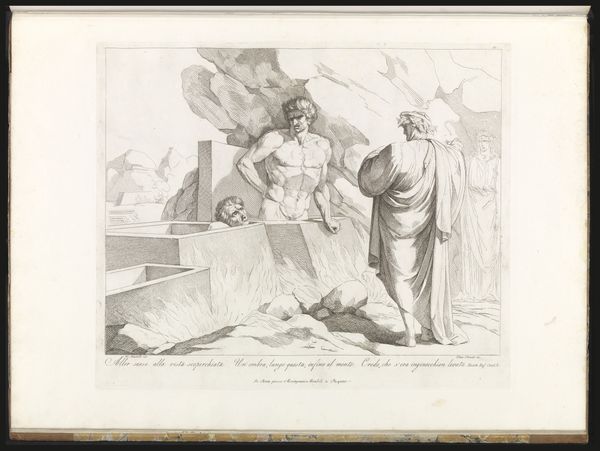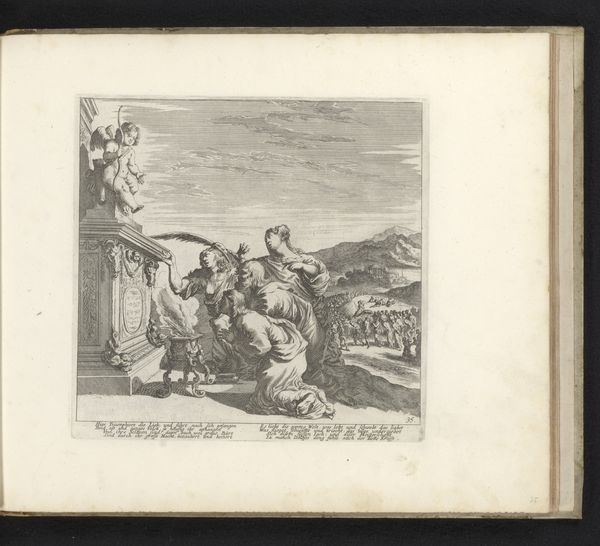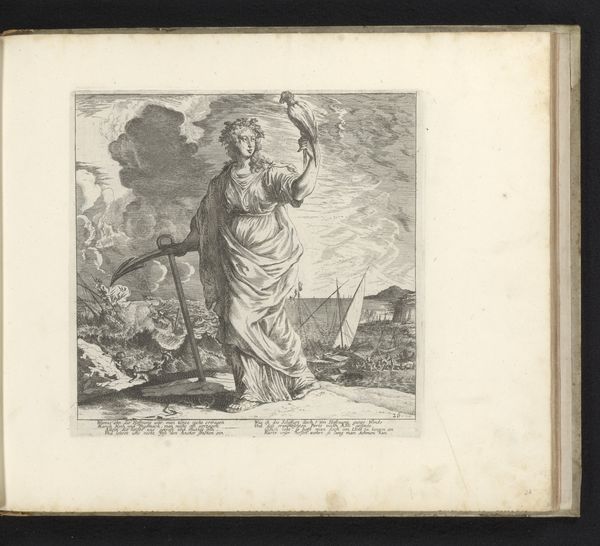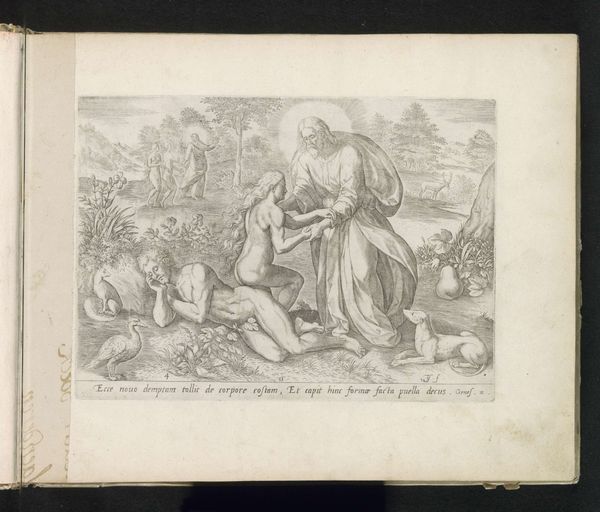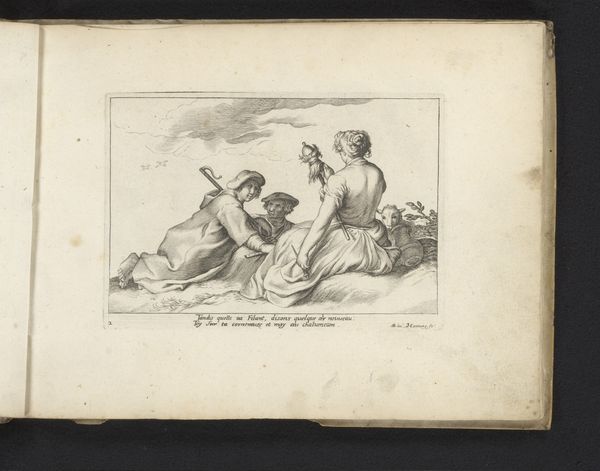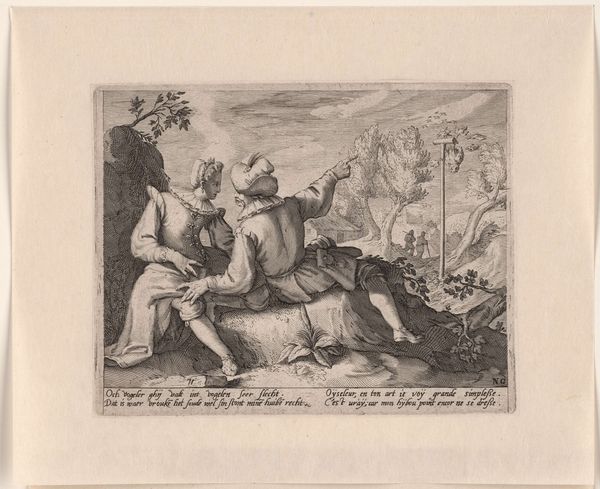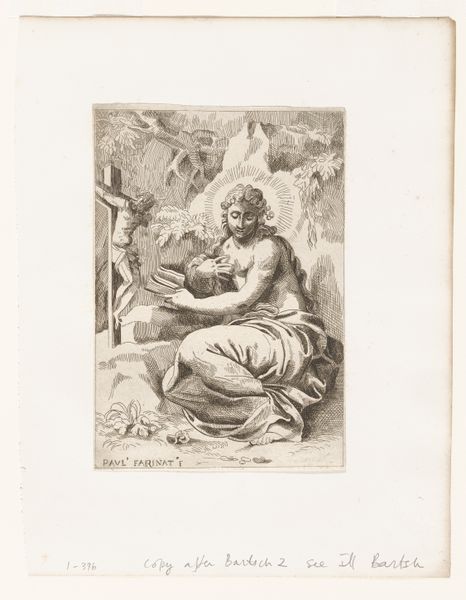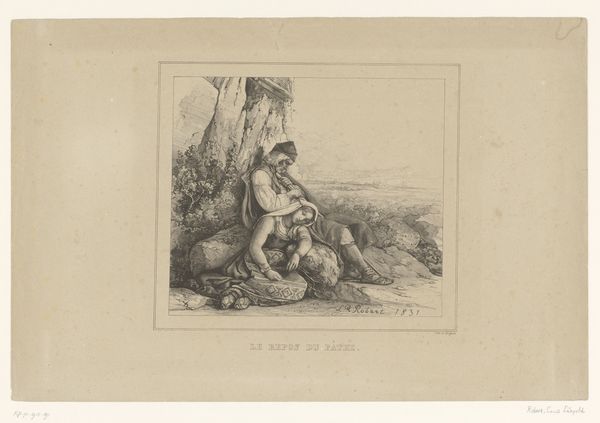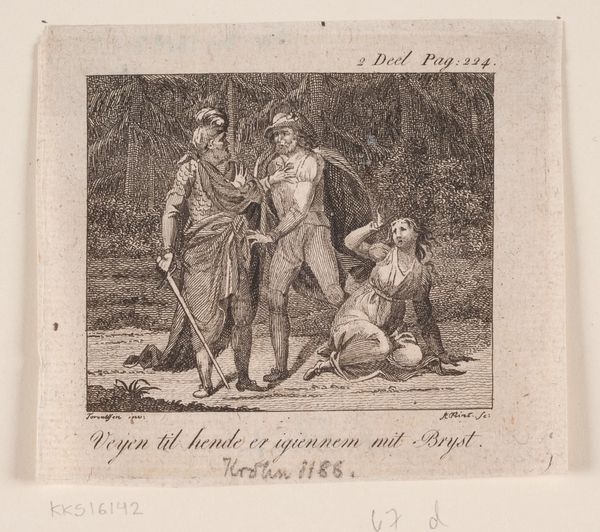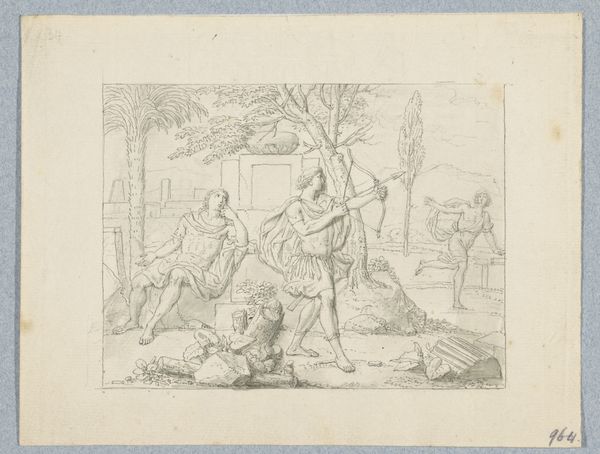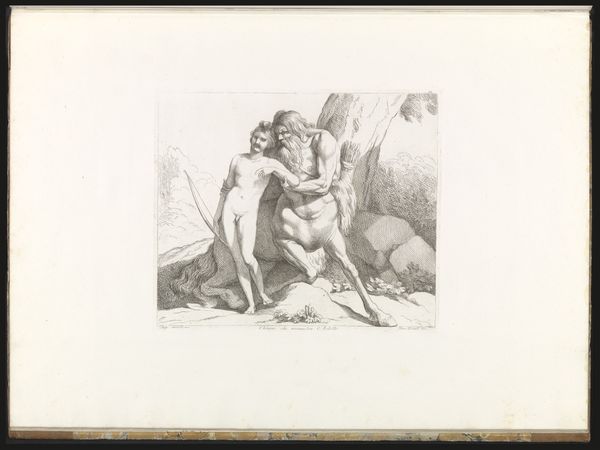
drawing, pencil
#
pencil drawn
#
drawing
#
neoclacissism
#
pencil sketch
#
figuration
#
pencil drawing
#
pencil
#
history-painting
#
watercolor
Dimensions: height 416 mm, width 494 mm
Copyright: Rijks Museum: Open Domain
Editor: So, this is "Thetis Pleading with Jupiter for Achilles," a pencil drawing by Giovanni Battista Romero from 1804. It strikes me as incredibly serene, almost ethereal, despite the intensity of the subject matter. The composition, with Jupiter elevated and Thetis reaching up to him, is really compelling. What stands out to you in this piece? Curator: The first thing that grabs me is the vulnerability expressed through the neo-classical style, right? We see Thetis, a sea nymph, entreating Jupiter, king of the gods. The scene isn't just about power, but this raw, maternal love pleading for her son's life. Notice how the soft lines of the pencil almost caress the forms, giving them a delicate humanity. Does that soft treatment soften your view on the neoclassical tendency to idealize things? Editor: Absolutely. I tend to associate Neoclassicism with, like, rigid perfection, but there's something really intimate about this sketch. Curator: Right? It's almost a peek behind the curtain of the gods. And think about why Romero chose to render this in pencil, not paint, not sculpture. It’s a sketch—a thought in progress. The choice says a lot. What do you think it says? Editor: Perhaps that it leaves room for our own interpretation and reflection to grow into the image? Curator: Exactly! The unfinished quality, almost, invites us to contemplate not just the story, but the artist's process, the very act of creation, of considering mortality even among gods. The divine narrative becomes deeply, delicately human. I keep expecting to see Romero just pop in here! Editor: I see it too, now! Thanks to you, it adds so much to how I experience it. It is both an appeal to history and a message from it.
Comments
No comments
Be the first to comment and join the conversation on the ultimate creative platform.

